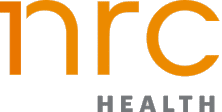The Internet of Things and Infectious Disease
The Internet of Things (IoT) is all about devices that are programmed to sense, report on and react to certain behaviours or conditions, providing a new level of efficiency, evidence-based data and automation. According to Forbes (McCue, 2015), the IoT market for healthcare will reach $117 billion by 2020. Exciting and life-changing leaps have already been made: wearable glucose meters, fertility sensors and fever monitors are already available, both for the individual consumer and in healthcare settings; sensors in freezers ensure a technician is notified if the temperature is inadequate to protect the supply of medicines and vaccines; and remote monitoring devices allow patients to recover at home while still having the advantage of status monitoring by healthcare professionals.
In terms of infection prevention and control, I see IoT potential in three distinct areas:
1. Validation of outcomes
2. Analysis of behaviours
3. Collaboration
Validation of outcomes
Infection prevention and control is a timely source of inspiration for technology companies. In addition to the introduction of numerous chemical disinfectants with impressive kill claims, technological advancements, like vaporized hydrogen peroxide and ultraviolet robots, have entered the marketplace with big claims and even bigger price tags. In evaluating whether or not these emerging technologies add value to a healthcare facility’s environmental cleaning program, companies are well-advised to provide unbiased proof of their products’ efficacy. It’s not enough to quote facts and figures about the cost of healthcare-associated infections (HAIs), nor the ability of a certain product to kill the pathogens implicated in HAIs. Unless a company can provide validation that their product has contributed to the overall reduction in HAIs within a defined space and time, the cash-strapped healthcare system will be slow to adopt new methods or technologies. Hospitals, insurance companies, governments, employers and patients all have an interest in unbiased, evidence-based proof of outcomes.
Technology can connect the hospital’s many and varied infection prevention efforts, including environmental cleaning and disinfection (by both humans and machines) and the hand hygiene of healthcare workers with the patterns of disease transmission, and provide valuable, timely information to support or refute marketing claims. Access to this information will invoke a better decision-making apparatus for healthcare administrators and will lead to the development of products and services that can withstand the rigorous testing of the Internet of Things.
Analysis of Human Behaviours
Infection transmission in healthcare is an under-studied area. When Ignaz Semmelweis published a study on the positive effects of good hand hygiene in healthcare in 1861, the discovery was a major breakthrough in infection prevention and control. Unfortunately, evidence-based approaches since that time have been lacking, mainly due to the fact that the right types of data to test new hypotheses are not available or have not been investigated or leveraged. The Internet of Things provides a new era of gathering and interpreting this data. Technology replaces the highly subjective method of observation to track the role of human behaviour in the transmission of infectious diseases.
A successful application of this, Hospital Watch Live (Infonaut), includes using sensors and other data sources to measure movement, contacts and interactions between people, objects and surfaces. Through this measurement, important behaviours can be calculated and linked to patient outcomes. The results of these calculations have already been used to design new patient safety interventions that identify and change priority behaviours.
Collaboration
In the Internet of Things age, we are connected to machines and each other like never before. The opportunities for both local and global engagement and collaboration through focused, context-specific platforms and communities are both exciting and daunting. The availability of and access to Big Data, real-time results and personalized information capture will connect institutional research with front-line applications.
A recent article on InfectionControl.tips makes the case for ‘Syndromic Surveillance’ (Furness, 2016), which encompasses the systematic collection and geographically-based analysis of clinically-observed symptoms presenting at hospitals and other healthcare settings. Syndromic Surveillance is a means to detecting public health or institution-specific outbreaks of infectious disease more quickly than the current method of waiting for confirmed laboratory results. Internet connected, user-friendly reporting tools in emergency rooms, nursing stations and doctors’ offices will allow relevant data to be collected quickly. The information and analysis will be readily available, paving the way for collaboration between machines and people and resulting in faster response times and intervention strategies.
Tomorrow is Today
We are barely scratching the surface on these approaches and potential data sources. There are substantial barriers to realizing the full potential of the Internet of Things in healthcare settings, including concerns over cost, security, privacy and the ability to use and interpret the data. Despite these significant obstacles, the Internet of Things has a definite role to play in infection prevention and control, and only time will tell how this integrated use of technology will improve health outcomes on a local and global scale.
Biotech startups and glorious claims-makers take notice: the future is clear and being led by the Internet of Things. The means and appetite for true validation of outcomes, objective behaviour analysis and real-time collaboration are here and will differentiate and define the success stories of tomorrow.
The Internet of Things is a game changer for healthcare-associated infections.
About Michael Diamond
Michael Diamond is currently leading a global collective on Infection Control and Prevention. With input from around the world, InfectionControl.tips aids in the advancement of new policies, technologies, trends, and discoveries. From food safety to hospital acquired infections, www.InfectionControl.tips is the platform for global discussion.
References:
Furness, Colin (2016, February 15). Syndromic Surveillance for Healthcare-Associated Infections. InfectionPrevention.tips, accessed February 22, 2016:http://infectioncontrol.tips/2016/02/15/syndromic-surveillance-for-healthcare-associated-infections/
Hospital Watch Live Platform. Infonaut.ca, accessed February 22, 2016: http://infonaut.ca/solution/
McCue, TJ (2015, April 22). $117 Billion Market for Internet of Things in Healthcare by 2020. Forbes.com, accessed February 22, 2016:http://www.forbes.com/sites/tjmccue/2015/04/22/117-billion-market-for-internet-of-things-in-healthcare-by-2020/#4f6f7f924711





